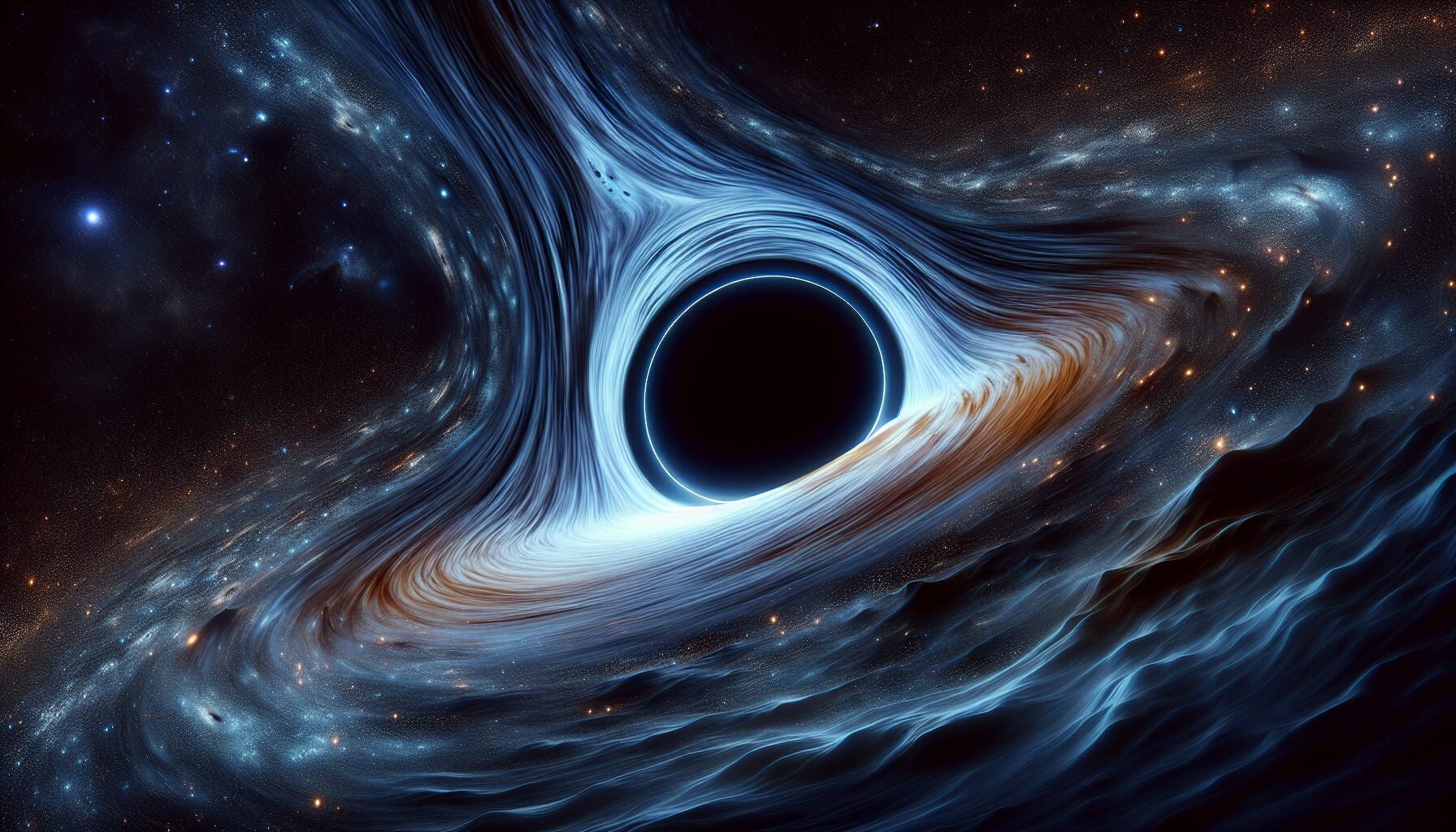Black holes have long captured the imagination of scientists and the public alike. These mysterious cosmic phenomena represent both an end and a beginning—a paradox of annihilation and the ultimate frontier. With their immense gravitational pull, black holes consume everything in their reach, including light, making them appear cold and dark. Yet, their ability to warp space and time presents them as a subject of immense beauty for those who dare to look closer.
The Formation of Black Holes
Black holes arise from the remnants of massive stars, marking the final stages of stellar evolution. When a star exhausts its nuclear fuel, its core collapses under the force of gravity. If the core’s mass is above a certain threshold, it continues to collapse until a singularity is formed—a point of infinite density where the laws of physics as we know them cease to apply.
- Stellar-mass Black Holes: These form from stars with masses 3-10 times that of the Sun.
- Intermediate-mass Black Holes: Rarer than stellar-mass black holes, their formation remains a topic of active research.
- Supermassive Black Holes: Occupying the centers of galaxies, their origin is less understood, though theories suggest mergers of smaller black holes or direct collapse of gas clouds.
The Event Horizon
The boundary around a black hole is called the event horizon. It represents the point beyond which nothing can escape the gravitational grasp of the black hole—not even light. The concept of the event horizon conveys a chilling sense of finality, echoing Albert Einstein’s general theory of relativity.
“Across the event horizon, nothing escapes the gravitational pull. It is a border that the universe dares not cross.” – Stephen Hawking
Exploring Singularities
At the heart of a black hole lies the singularity, where gravitational forces compress matter to infinite density. Singularities challenge our understanding of physics and occur where quantum mechanics and general relativity clash. Insights into these enigmas could pave the way for groundbreaking advancements in theoretical physics, prompting researchers to pursue quantum gravity theories like string theory or loop quantum gravity.
Theoretical Wonders
While these cosmic giants obliterate with impunity, phenomena like Hawking radiation hint at their complexities. Proposed by Stephen Hawking, this radiation suggests that black holes could eventually evaporate, emitting particles due to quantum effects near the event horizon. This discovery bridged a critical understanding between quantum mechanics and cosmology, opening avenues for research into the universe’s asymmetries and fate.
The Role of Black Holes in Galactic Evolution
Far from being mere space-faring vacuums, black holes significantly influence their surrounding environments and play pivotal roles in galaxy formation and evolution. Supermassive black holes, in particular, are pivotal for shaping galaxies:
- Regulating Star Formation: By ejecting streams of energetic particles, they can prevent excessive star formation, maintaining galactic balance.
- Galactic Center Dynamics: As gravity anchors galaxies, feeding supermassive black holes with surrounding matter can fuel quasars—extremely luminous objects that emit massive amounts of energy.
The Allure of Black Holes
Despite their foreboding nature, black holes captivate the human mind. Theoretical physicist and cosmologist Kip Thorne has notably contributed to our understanding of black holes, earning the Nobel Prize for his work detecting gravitational waves emitted by merging black holes. Thorne’s insights have not only progressed our grasp on cosmic phenomena but also inspired popular culture, influencing Hollywood portrayals such as the representation of a supermassive black hole in Interstellar.
Future Exploration
As technological innovations in telescopes and detectors advance, scientists are optimistic about unlocking further black hole mysteries. The historic first image of a black hole’s shadow, captured by the Event Horizon Telescope in 2019, was a landmark achievement revealing these enigmas that lie at the cosmic peripheries.
The path forward for black hole research is both daunting and thrilling. As Kip Thorne once noted, “Black holes are time machines. We know in principle how to construct them, but the technology is far beyond us.” Humanity stands at the cusp of cosmic discovery, beckoning researchers and dreamers to delve deeper into the shadowy depths of the universe.
In conclusion, black holes are wondrous manifestations of the universe. They symbolize ends and beginnings, destruction, and formation. Through them, we learn life’s impermanence and the potential of endless horizons.

Comments